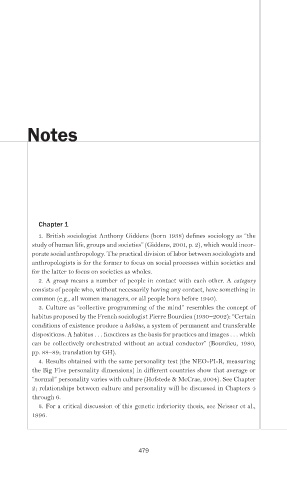Page 514 - Cultures and Organizations
P. 514
Notes
Chapter 1
1. British sociologist Anthony Giddens (born 1938) defines sociology as “the
study of human life, groups and societies” (Giddens, 2001, p. 2), which would incor-
porate social anthropology. The practical division of labor between sociologists and
anthropologists is for the former to focus on social processes within societies and
for the latter to focus on societies as wholes.
2. A group means a number of people in contact with each other. A category
consists of people who, without necessarily having any contact, have something in
common (e.g., all women managers, or all people born before 1940).
3. Culture as “collective programming of the mind” resembles the concept of
habitus proposed by the French sociologist Pierre Bourdieu (1930–2002): “Certain
conditions of existence produce a habitus, a system of permanent and transferable
dispositions. A habitus . . . functions as the basis for practices and images . . . which
can be collectively orchestrated without an actual conductor” (Bourdieu, 1980,
pp. 88–89; translation by GH).
4. Results obtained with the same personality test (the NEO-PI-R, measuring
the Big Five personality dimensions) in different countries show that average or
“normal” personality varies with culture (Hofstede & McCrae, 2004). See Chapter
2; relationships between culture and personality will be discussed in Chapters 4
through 6.
5. For a critical discussion of this genetic inferiority thesis, see Neisser et al.,
1996.
479

